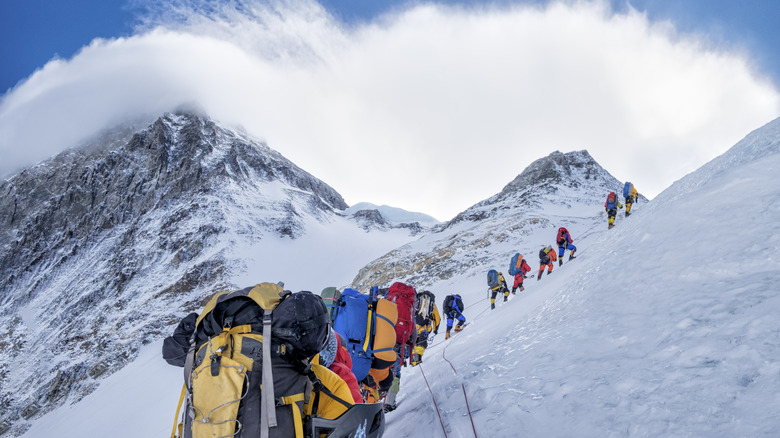The Best Time Of Year To Book Your Mt. Everest Expedition
Summiting Mount Everest is a goal for many thrill-seekers and adventurers around the globe because conquering the tallest mountain on the planet is truly an incredible achievement. However, because Everest is one of the most dangerous mountains to climb, having a successful summit expedition takes a lot of careful planning and preparation with everything from booking your trip with a reliable mountaineering company and gathering the right gear to planning your expedition at the right time. In fact, when it comes to timing, the best time to book your Mount Everest expedition is typically in the spring, between the months of March and May.
While weather conditions are important on many hikes, they are critical when planning an Everest expedition because simple changes in snowfall, wind speed, and temperature can make the difference between a successful summit and an unsuccessful, or possibly even deadly, attempt. The reason why spring is often considered the best season to climb Mount Everest is because it is the time period where the mountain gets the least precipitation and has the lowest winds. Spring is also typically when you will get good visibility and clear and sunny skies, making for excellent views during the trek and hopefully an incredible photo at the summit. While the best weather window to summit Everest typically happens in May, because Everest expeditions usually take around two months, this would mean arriving at the mountain sometime in March so that you have enough time to acclimatize and prepare for your final ascent.
Your other options for when to summit Mt. Everest
While spring often offers the best summiting window and weather, it isn't the only time of year when it is possible to climb to the peak of the tallest mountain in the world. Plus, now that the route to the top of Everest has gotten so busy in spring, some climbing companies have moved their expeditions to fall. This is because the period from late September to early October, in particular, usually has good weather with clear skies and low winds. In fact, in the 1980s, autumn was the most popular season to summit Everest. However, it is important to note that the autumn weather window is often less predictable than the one in spring and can vary depending on when the summer monsoons end.
While a fall Everest climb does offer warmer temperatures and dry weather, being on the mountain almost immediately after the monsoons means that there will be more snow already there. This is a problem because newly fallen snow makes some areas less stable, especially higher up on the mountain, and is one reason why most climbers consider summits in spring to be safer than autumn. However, all of this is worth it to some climbers who would rather face more snow with fewer people so that they won't have to wait in line on the congested spring route to the summit.
Why summer and winter are bad times to summit Mt. Everest
While spring is often considered the safest season to summit Mount Everest and it is possible — although slightly more dangerous — to climb this behemoth of a mountain in fall, summer and winter are considered bad times to attempt to summit the world's tallest peak. The reason that winter is not a good season for an Everest expedition is probably what you would expect: very cold and frigid temperatures as well as strong cold winds and heavy snow. Although there have been a few Everest expeditions in winter, these weather conditions make the trip extremely dangerous, which is why only 15 people have ever succeeded.
Summer is also an incredibly dangerous time of year to attempt to summit Mount Everest. The reason for this is that summer is the monsoon season in Nepal, which leads to heavy precipitation and thick fog. This causes problems not only with visibility and navigation, but it also makes conditions on the mountain unstable, leading to avalanches. While there are a few things you can do if caught in an avalanche to make your chances of survival better, the remote nature of Mount Everest makes avalanche rescue difficult. Together, the instability of the mountain and lack of visibility make summer the most dangerous time of year to attempt to climb Mount Everest.


